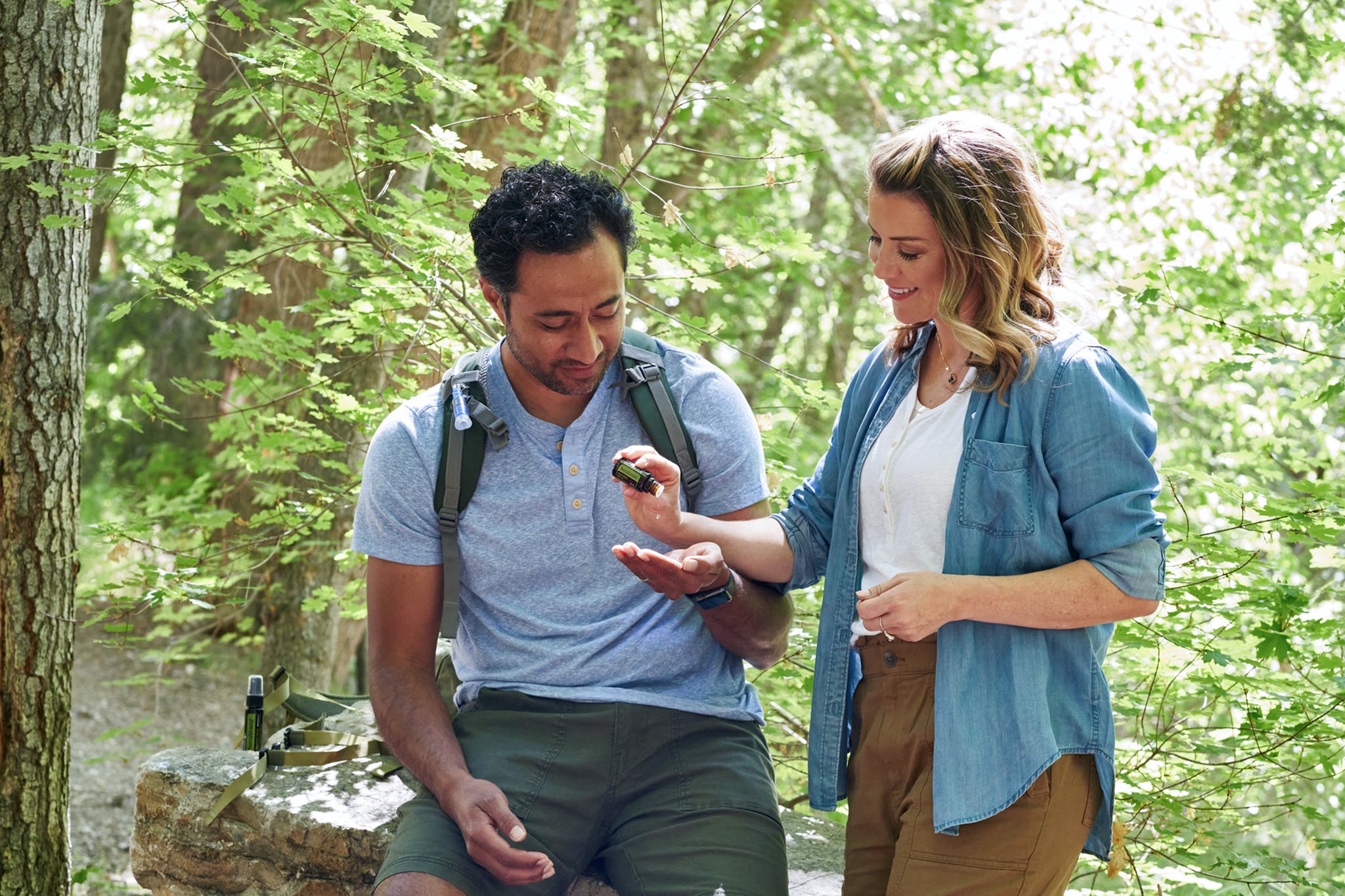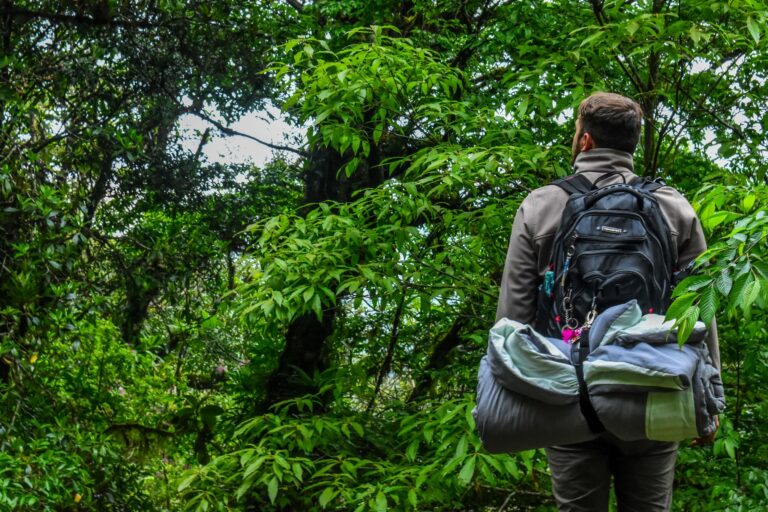Mosquitoes pose a significant threat to human health globally. Known for their itchy bites and high-pitched humming, mosquitoes aren’t just a mere annoyance. They are carriers of some severe diseases that can even threaten life.
Mosquito-borne diseases are responsible for hundreds of thousands of deaths each year. According to the World Health Organization, malaria alone is one of the deadliest mosquito-borne diseases. It has killed an estimated 409,000 people in 2019, with children under five years old being the most vulnerable. But malaria isn’t the only threat these miniature menaces carry. Mosquitoes are also known vectors of other diseases such as Dengue fever, Zika virus, West Nile virus, and Chikungunya, among others. These illnesses pose a substantial risk, especially in tropical and subtropical regions where mosquito populations thrive. However, globalization and climate change have led to the spread of mosquitoes into new areas, increasing the risk of mosquito-borne diseases worldwide.
The good news is that we can protect ourselves from these threats. The most effective way to prevent mosquito-borne diseases is to prevent mosquito bites in the first place. One of the best ways is by using mosquito repellents. But with countless products on the market, choosing the best mosquito repellent for your needs can be challenging, especially when traveling to different parts of the world where mosquito-borne disease risks may vary.
So, how do you navigate through the vast sea of options to find the right mosquito repellent for your travel needs? Ideally, you want to purchase your best insect repellent before your trip. Many of the products I will talk about in this post have been approved for safety and use by the Environmental Protection Agency (EPA). This blog post will guide you through understanding the threat of mosquitoes, what mosquito repellents are, the different types available, and how to choose the best one for your international travels.
Because, as they say, forewarned is forearmed – when you’re equipped with the right knowledge and products, mosquitoes don’t have to ruin your travel adventures.
Prevalence of Mosquito-Borne Diseases
Understanding where mosquito-borne diseases are more prevalent is crucial when planning a trip abroad. In general, tropical and subtropical regions have a higher risk due to the abundance of mosquito breeding sites and the presence of disease-carrying mosquito species.
Malaria, for example, is highly prevalent in Sub-Saharan Africa, while the Zika virus had a significant outbreak in Latin America in 2015-2016. Dengue, on the other hand, is widespread in Southeast Asia, parts of South and Central America, and the Western Pacific islands. It’s worth noting that these diseases can also be found in parts of the United States, particularly in warmer states like Florida and Texas.
This doesn’t mean that you should avoid these regions completely, but it does underline the importance of taking preventive measures to protect yourself from insect bites. The best way to prevent disease is to not be bitten by mosquitoes in the first place. Remember that prevention is always better than cure, especially when dealing with diseases that can cause severe health complications or even death.
How do Mosquito Repellents Work?
As we delve into the world of mosquito repellents, it’s essential to understand what they are and how they work. At their core, mosquito repellents are substances designed to ward off mosquitoes, reducing the likelihood of being bitten and potentially contracting a mosquito-borne disease. They do this by disrupting the olfactory system – the sense of smell – of mosquitoes, making it harder for them to detect, and therefore bite, humans.
There are two broad categories of mosquito repellents: natural and chemical-based. Both types have their unique sets of benefits and drawbacks.
Natural Bug Repellents
Natural mosquito repellents are typically derived from plants known to possess insect-repelling properties. The active ingredients in these products disrupt the mosquito’s ability to smell potential blood hosts, therapeutically reducing your attractiveness to these pesky insects.
While natural repellents are generally considered safer and more environmentally friendly, they may not provide as effective or long-lasting protection as their chemical counterparts. They often require more frequent application. However, they can be a great choice for individuals with sensitive skin or allergies to chemicals commonly used in other repellents.
Oil of Lemon Eucalyptus (OLE)
Products containing Oil of Lemon Eucalyptus (OLE) or PMD as the main ingredient is a synthetic version of OLE. Take note that any natural insect spray labeled as “Pure” or “Natural” lemon eucalyptus oil has NOT been tested or registered with the EPA as a proven insect repellent spray alternative, so the CDC does not recommend its use in its “pure” form. The CDC does not recommend this as a safe repellent for children as it has a high potential for allergic skin reactions. Click here to see if the product you want to use is registered with the EPA.
Essential Oil Repellents
These natural repellents are made from natural plant oils such as citronella, eucalyptus, lavender, and lemon. While natural mosquito repellents made up of essential oils are generally safe to use, they are not as effective as DEET or picaridin-based products. They also need to be reapplied more frequently. Most natural mosquito repellent sprays have not been tested by the EPA or registered for effective use, so please use them with caution.
If you want to go the natural repellent route, be sure to look for natural alternatives that have been tested and registered with the EPA. Many essential oils have not been tested or registered so they may not be the best option for protection if traveling to a high-risk disease endemic area.
Chemical-based Mosquito Repellents
On the other hand, chemical-based mosquito repellents are scientifically formulated to provide effective and long-lasting protection against mosquitoes. Chemical-based repellents generally offer longer-lasting protection and are more suitable for regions with high mosquito activity or a high prevalence of mosquito-borne diseases. In general, chemical-based products can offer hours of mosquito protection compared to natural products.
DEET: The Gold Standard Active Ingredient
DEET (N, N-diethyl-meta-toluamide) is the most widely used and effective mosquito repellent available in the market. It was developed by the US Army in 1946 and has been used by millions of people since then. DEET works by masking the scent of carbon dioxide and lactic acid produced by our bodies, which attracts mosquitoes. It is effective against a wide range of mosquito species and can provide protection for up to 8 hours depending on the concentration. You can read more about CDC’s recommendation on DEET products and mosquito protection here.
DEET Safety Concerns and Precautions
The EPA has determined that DEET-based products continue to be safe to use as long as they are used properly and in the correct amounts. It is safe to use in children as well. You can read more about their research here. Products containing DEET continue to show significant benefits over other products when it comes to repelling mosquitoes and ticks.
While DEET is generally safe to use, it can cause skin irritation and other side effects such as eye irritation, rash, and blistering. It is also toxic if ingested or inhaled in large amounts. Therefore, it is essential to use DEET-based repellents according to the instructions provided on the label. The CDC recommends that children under 10 should not apply DEET themselves, and DEET should not be applied to young children’s hands or around their eyes and mouth. It should also not be put on wounds or broken skin.
Picaridin
Picaridin–a repellent chemical compound that was first developed in the 1980s. It is similar to DEET in terms of effectiveness and duration of protection, but it has a milder odor and is less likely to cause skin irritation. Picaridin is also safe to use on clothing and gear, unlike DEET. It is effective against a wide range of mosquito species and can provide protection for up to 8 hours depending on the concentration. Picaridin is also safe to use on children without age restriction. You can read more on how to properly apply insect repellent on children here.
IR3535
IR3535 is a synthetic compound that mimics a naturally occurring amino acid in fish. It’s been used in Europe for over 20 years and has recently become available in the U.S. IR3535 provides up to 8 hours of protection against mosquitoes and is less likely to cause skin irritation than DEET. However, it’s not as effective as DEET or picaridin and may need to be reapplied more frequently.
Permethrin Fabric Treatment for Clothing and Gear
Permethrin is an insecticide that acts as a pesticide and repellent. You can use this to treat your clothing, hats, shoes, jackets, safari gear, and mosquito nets for supplemental protection. Permethrin-treated clothing should be allowed to dry for at least 24 hours before wearing them. Permethrin-treated clothing can provide protection for up to 6 washes or 6 weeks of use, whichever comes first.
Permanon and Sawyer, Permethrin, Repel, and Ultrathon Permethrin Clothing Treatment are products registered with the EPA for clothing and items. Be sure to follow product instructions for proper handling and usage. As with any product, be sure to review whether the permethrin sprays or permethrin repellents you use are registered with the EPA.
Alternatively, you could also find insect-repellent clothing already pretreated with permethrin and these products in the United States should be marketed as Insect Shield, BugsAway, or Insect Blocker.
Types of Mosquito Repellents
When it comes to staying safe from mosquitoes, a diverse array of repellents are at your disposal. These come in many forms, including sprays, lotions, patches, and mosquito repellent devices. Each type comes with its unique set of advantages and disadvantages, so let’s dive deeper into each one to help you make an informed decision.
Pump Spray or Aerosol
Sprays or aerosols are the most common form of mosquito repellent and are highly favored for their ease of application. They can be applied directly to the skin or clothing, providing a guard against bug bites. However, they do require frequent reapplication, especially if you’re sweating or swimming, and some people may find certain brands’ scents overpowering. Furthermore, the aerosol cans used for sprays can also be harmful to the environment.
Lotions
Lotion-based repellents offer a softer touch for those with sensitive skin. They often contain moisturizers, making them less drying than sprays, and can be more precisely applied to ensure no spot is left unprotected. On the downside, they can feel greasy and take a bit longer to apply as compared to sprays. Also, like sprays, they require regular reapplication for continued effectiveness.
Patches or Repellent Bracelets
Patches or repellent bracelets provide a convenient, mess-free option. They can be stuck onto clothing, bags, or strollers, emitting a scent that deters mosquitoes. This hands-off approach is especially beneficial for children who might not sit still for sprays or lotions. However, patches generally provide a smaller range of protection and might not be sufficient in high-risk areas. These products can be used as supplemental to a lotion or spray form but should not be used alone.
Electronic Devices
Electronic mosquito repellents are a modern solution to the age-old problem. These devices emit ultrasonic frequencies that are said to repel mosquitoes. They are convenient and reusable, making them a cost-effective option in the long run. However, scientific evidence regarding their effectiveness is mixed, and they might not be the best choice when traveling to areas with high mosquito activity or prevalent mosquito-borne diseases. A lot of these devices have not been tested thoroughly enough to prove their effectiveness, so should not be used as the sole source of mosquito-repellent.
How to Choose the Best Mosquito Repellent for Travel
When it comes to selecting a mosquito repellent for your travels, there’s more to consider than just grabbing the first product off the shelf. You need to think about factors such as effectiveness, safety, duration of protection, and comfort. It’s also crucial to take into account destination-specific factors like the species of mosquitoes you’ll encounter and disease prevalence in the area. Let’s delve into these considerations.
Effectiveness
The primary purpose of a mosquito repellent is to protect you from mosquito bites. Hence, its efficacy should be your top priority. Look for products with proven ingredients that repel mosquitoes effectively. DEET, Picaridin, and Oil of Lemon Eucalyptus are some examples of active ingredients recognized by the Centers for Disease Control and Prevention (CDC) for their repellent properties. Look for products that have been effectively tested by the EPA. You will find an EPA registered number if they have been approved.
Safety
Safety is another essential factor to consider. While most mosquito repellents are safe for general use, some people may have allergic reactions to certain ingredients. Always check the product label for any potential allergens, especially if you have sensitive skin or known allergies. Furthermore, certain repellents may not be suitable for children or pregnant women, so it’s crucial to verify this information before making a purchase. Consider purchasing an item early enough before your trip and applying it to a small area of your arm to test for any allergic reactions.
Duration of Protection
You’d want a repellent that offers long-lasting protection, especially if you’re traveling to areas with a high prevalence of mosquitoes. The duration of protection can vary greatly among products, ranging from a few hours to an entire day. Keep in mind that factors such as sweating and swimming can reduce the effectiveness of a repellent, so you might need to reapply it more frequently in such cases. For example, consider what types of outdoor activities you plan on doing and anticipate how long your outdoor exposure may be. When visiting a Travel Health clinic, health professionals can help you identify certain risks of your itinerary.
Comfort
Comfort is often overlooked but it’s also an important factor. Some repellents may feel sticky or leave a strong odor, which can be uncomfortable for some users. Therefore, consider trying out different forms of repellents such as sprays, lotions, and patches to find one that you’re comfortable with.
Destination-Specific Factors
Finally, don’t forget to consider the specifics of your travel destination. Different regions may have different species of mosquitoes, each with their unique behaviors and disease risks. For instance, if you’re traveling to an area known for malaria or dengue fever, you’d want a repellent specifically designed to ward off the mosquito species that transmit these diseases. Learn which are warmer months of a country as transmission risk for certain diseases may vary at certain times of the year. It’s best to research your destination and consult with a travel health professional for personalized advice.
In a nutshell, choosing the right insect repellent for your travels involves a thorough evaluation of the product’s effectiveness, safety, duration of protection, and comfort level. Additionally, understanding the mosquito species and disease prevalence in your travel destination will further guide your decision-making process. Remember, being well-prepared is your first step towards a mosquito-free, enjoyable journey.
Top Picks: Mosquito Repellents for International Travel
The most effective mosquito repellent is one that combines effectiveness, safety, and positive user reviews. Here are my picks if you are traveling to a mosquito-endemic area that is at high risk for transmissible diseases such as Zika, Dengue Fever, Yellow Fever, Japanese Encephalitis, or Chikungunya. Items listed will have at least 30 percent deet or 20 percent picardin.
DEET Products Registered With The EPA
| Product Name | Protection Time | % of product in formula | Spray, Lotion, or Towellette | Price |
| OFF! Deep Woods Sportsmen Insect Repellent I | 10 | 98.25% | Spray | See Price |
| Repel 100 Insect Repellent for Severe Conditions | 10 | 98% | Spray | See Price |
| Ben’s 100 Insect Repellent | 10 | 98.11% | Spray | See Price |
| Sawyer Premium 100 Insect Repellent | 10 | 98.11% | Spray | See Price |
| Jungle Juice 100 Insect Repellent Squirt | 10 | 98.1% | Squirt/Lotion | See Price |
| Jungle Juice 100 Insect Repellent Spray | 10 | 98.1% | Spray | See Price |
| Bug Barrier | 10 | 95% | Spray | See Price |
| Repel Insect Repellent Wipes | 10 | 30% | Towelette | See Price |
| Repel Insect Repellent Sportsmen Max Formula Spray Pump 40% DEET | 8 | 40% | Spray | See Price |
| 3M Ultrathon | 12 | 34.34% | Lotion | See Price |
| Bug X 30 | 7 | 30% | Spray (travel friendly) | See Price |
| Ben’s Tick & Insect Repellent Wipes | 7 | 30% | Towelette | See Price |
| Ben’s 30 Insect Repellent | 7 | 30% | Spray (travel friendly) | See Price |
Picaridin Products Registered With The EPA
| Product Name | Protection Time | % of product in formula | Spray, Lotion, or Towellette | Price |
| Sawyer Picaridin Insect Repellent Lotion | 14 | 20% | Lotion | See Price |
| Sawyer Picaridin Insect Repellent Spray | 14 | 20% | Spray | See Price |
| Ranger Ready | 12 | 20% | Spray (travel friendly) | See Price |
| OFF! Clean Feel Insect Repellent Spritz | 8 | 20% | Spray (travel friendly) | See Price |
Travel Health Insider is reader-supported, meaning, at no cost to you, we may earn a commission if you buy after clicking an affiliate link. Also, we are a participant in the Amazon Services LLC Associates Program, an affiliate advertising program designed to provide a means for us to earn fees by linking to Amazon.com and affiliated sites.







